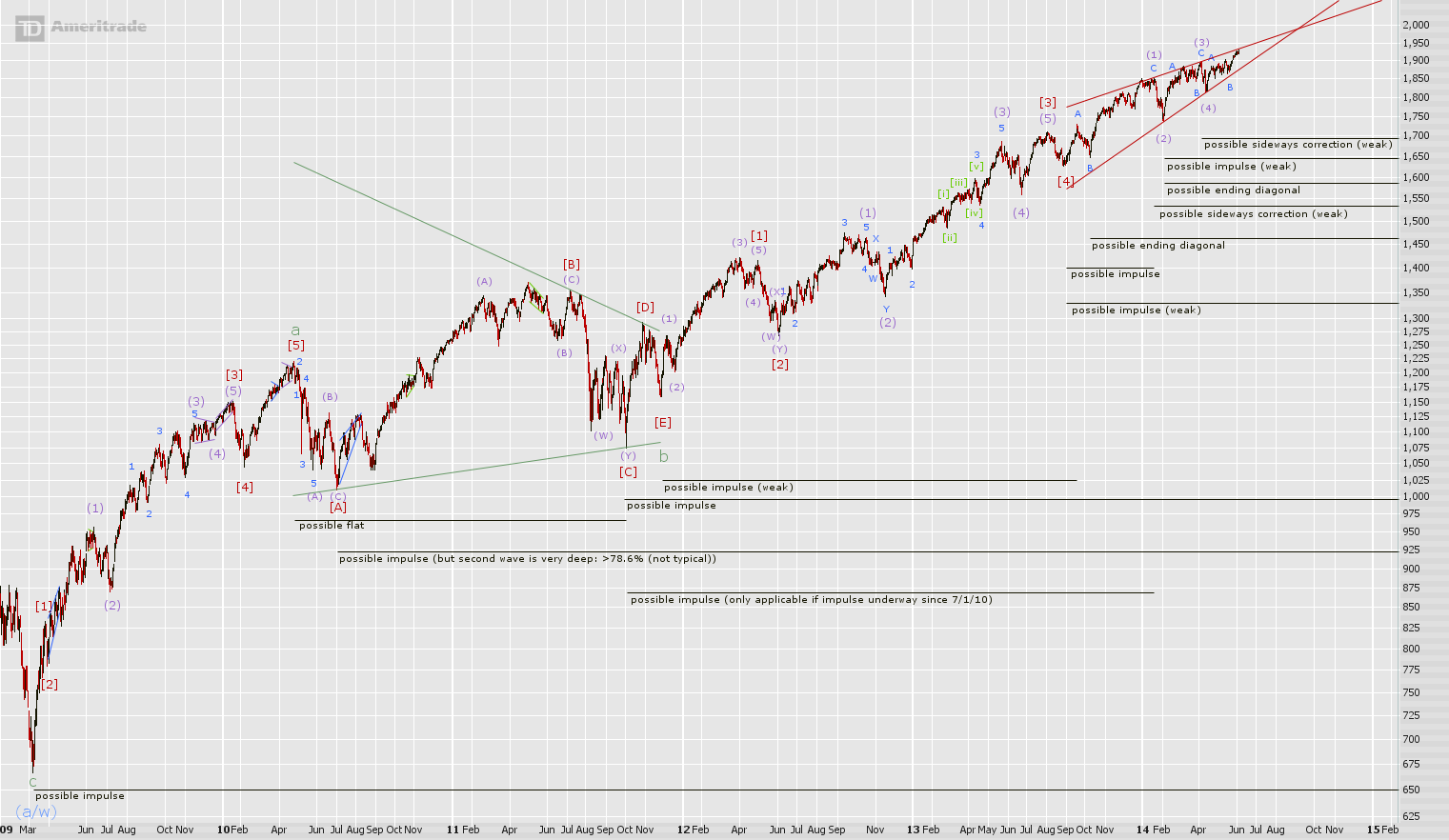Last time the possibilities from late 2013 to the present were discussed in depth and these have not changed. As stated last time, "the best options are ending diagonal wave counts beginning in 2013 at [4] or B where their 5th waves are underway, or an ending diagonal underway since (2) where its 3rd wave is underway. An impulse wave higher since [4] and/or (2) are very weak options." The sideways possibilities remain weak. For a full explanation of where these views come from, please visit the last post here.
From wave (4), there can be a zigzag higher to ii of (a) or just an impulse to A then zigzag-family wave correcting to [w] when the area is taken in isolation. Neither option is compelling for the reasons discussed last time. But the possibility of this double zigzag higher has weakened due to the large size of the congestion area this week in relation to the early subwaves higher in [ii] of C; it is difficult to view wave [iii] incomplete. The best view of the structure higher since B is an impulse underway where its 4th wave is underway or complete. More on the details on this below.
The other double zigzag possibility where 'w' terminates at (b) of [y] (triangle divides two impulse waves in the 'w' zigzag) remains a weak option because of the complexity involved with the pattern. The market tends towards simple moves. Without over-thinking the situation, so far there are three waves higher since the wave (4) low.
Following [ii], the impulsive structure breaks down into two possibilities depending on how the action from ii of (iii) to v of (iii) is looked at. If ii to v is one impulse, then the impulse higher from (ii) terminated at [iii] or the high reached Monday 6/2. Because wave (ii) is so small relative to the action following the 6/2 high, and still assuming ii to v is one impulse, the impulse higher since (ii) very likely terminated at [iii] and the impulse higher since [ii] terminated at the 6/2 high. If ii to iii is one impulse, the structure above in color makes the most sense.
No matter how ii to v is viewed, breaking (ii) to ii down into 2 or 3 sets of 1st and 2nd waves is a possibility. But of the numerous new options this provides, there is only an added complexity and no added benefit; the impulse higher beginning at [ii] terminated at [iii] or the 6/2 high unless there is a major proportionality problem within the wave (again, the action following the 6/2 high is much larger than any corrective wave preceding it except for [ii]). Also the size of the corrections within i are a bit small relative to ii of (v), iv of (v), etc.
Read more at http://ewaveanalytics.com and remember we offer a 1 week free trial. Also, check out our great affiliate program!



blog comments powered by Disqus